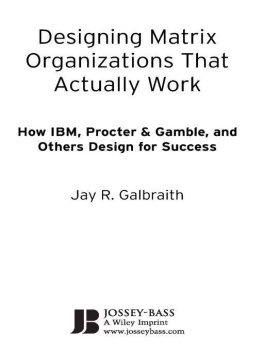DESIGNING
TECHNOLOGY ,
WORK ,
ORGANIZATION S
AND VICE VERSA
Edited by
Attila Bruni
Department of Sociology and Social Research of the Faculty of Sociology of the Trento University
Laura Lucia Parolin
Faculty of Design and Art, Free University of Bozen-Bolzano
Cornelius Schubert
DFG Research Training Group "Locating Media", University of Siegen
Vernon Series in Sociology
Copyright 2016 Vernon Press, an imprint of Vernon Art and Science Inc, on behalf of the authors.
All rights reserved. No part of this publication may be reproduced, stored in a retrieval system, or transmitted in any form or by any means, electronic, mechanical, photoco p ying, recording, or otherwise, without the prior permission of Vernon Art and Science Inc.
www.vernonpress.com
In the Americas: Vernon Press 1000 N West Street, Suite 1200, Wilmington, Delaware 19801 United States | In the rest of the world Vernon Press C/Sancti Espiritu 17, Malaga, 29006 Spain |
Vernon Series in Sociology
Library of Congress Control Number: 2015934751
ISBN: 978-1-62273-146-6
Product and company names mentioned in this work are the trademarks of their r e spective owners. While every care has been taken in preparing this work, neither the authors nor Vernon Art and Science Inc. may be held responsible for any loss or da m age caused or alleged to be caused directly or indirectly by the information contained in it.
Table of Contents
SECTION 1 Designing Technology, Work and Organization in Institutionalized Organizational Settings
SECTION 2 Designing Technology, Work and Organization in Emerging Organizational Settings
SECTION 3 Issues of Technology, Work and Organization in Design Settings
INTRODUCTION:
DESIGNING TECHNOLOGY, WORK, ORGANIZATION AND VICE VERSA
Attila Bruni
Laura Lucia Parolin
Cornelius Schubert
Technology, work, and organizations (TWO) are three main pillars of co n temporary societies. Much has been written about each of them separat e ly as well as about their interrelations. This volume collects empirical ca s es and conceptual discussions which explicitly look for the close inte r weaving of work, technology, and organi zation s by questioning their d e sign. Although largely used, in mainstream organization and management studies, the concept of design has been black-boxed and easily implied as an updated (and more fashionable) version of the traditional idea of structuring organizational processes. A quick and telling example can be found in the work by Galbraith (1973, 2002; Galbraith, Downey and Kates, 2001), where the aim of organizational design is defined as the alignment between people, strategy, structure, rewards and processes. Even most recent books on organization design (Bllingtoft, 2009), despite addres s ing contemporary organizational issues (such as networking and virtual i ty) , continue to frame it in terms of contingency, resource-based proces s es and strategic choice.
Notwithstanding this literature, we want to take a differe nt approach, using the idea of design as a sensitizing concept (Blumer , 1954) in order to unpack and highlight at the same time the relations that hold together technology, work, and organization. From this point of view, we can bo r row from Latour (2009) at least three good reasons for adopting it as a conceptual (more than theoretical) lens.
First, compared to mana ge, plan, and/or build, d esign is a hu m ble concept, in that it makes explicit that an intervention has been made on something that was already there and that already had a function. Things are designed in order to face specific problems, issues and/or interests, and in relation to existing infrastructures and social practices. In this sense, more than with creation and innovation , design has to do with remedy and taken for grantedness. Moreover, design is usually related to future scenarios, so that the relationship between the activity and its result can always be a matter of debate.
Second, the idea of design brings attention to details and to the skil l fulness of details. Things are not simply made or fabricated, but rather the result of art and craft. As an artistic and crafting activity, the idea of design calls into action also symbolic and interpretative processes, shedding light on how the meaning of objects is grounded in the material and semiotic relations that we establish with them.
Third, design introduces ethical and aesthetical issues for it raises questions about good and bad design, whether something is nice or not. The morality and the aesthetics objects bring with them are inscribed in their materiality, which, in turn, becomes questionable. In this way, things stop being matters of fact and become matters of concern (Latour , 2005), thus allowing for debating and critiquing them.
Using design as a sensitizing concept, we can frame TWO not as pre-constituted entities, but as processes in search of alignment. This alig n ment is not simply the result of strategic choices and/or contingencies, but it depends on the ways in which TWO are translated into actual pra c tices and infrastructures. What interests us is not the singular beings of technology, work, and organization, but the practices through which they become mutually entangled. We want to emphasize the processes that inextricably link work and organi zation to the use of artifact s and techn o logical systems (and vice versa); explore in detail the socio-material artic u lations and disarticulations of daily work; the doings of objects and tec h nologies in everyday organizational life; the reconstruction of organiz a tional processes through technological practices; the relation between innovations and technologies in organizational settings. We want to u n derstand how technologies, work, and organizations are designed or more specifically how work and organizations are designed through technologies, how organizations design work and technology, and how technologies and organi zation s are designed through work.
We see design in itself as an activity, so that we prefer to adopt it as a verb ( designing), in order to further emphasize its processual dimension. And given that design is a practical activity as well, we are also willing to unpack it as socially organised, technically mediated and sensually e m bodied work: which technologies are used in design and in which way is design organised?
In addition to the focus on design both empirically and conceptually the contributions largely draw on two related, but not always congruent fields: organi zation studies (OS ) and science and technology studies (STS ). TWO are central to both fields, but their relative importance varies d e pending on the case and question under study. From one side, working and organizing today seem to be embedded in increasingly complex and situated technologies and practices. The spreading of information and communication technologies (ICTs) has changed workplaces (and even the very meaning of workplace as an area marked by the physical pre s ence of different human actors), so that working and organizing mobilize the joint action of humans, technologies and situated knowledge (Bruni, 2005; Bruni and Gherardi, 2007). Complex socio-material practices su p port collective work, blurring the distinction between the design of tec h nology, work and organizational processes: organi zation al routines and structures are inscribed in ICTs, embodied in roles, rules and habits, i n corporated into technical arrangements and built into architectures. O b jects and technologies are increasingly social, in that they presume the active engagement of users and acquire meaning and relevance in relation to social practices. Several of the contributions of this book thus make a close connection between the socio-materiality of design and the notion of heterogeneous engineering (Law , 1987). Furthermore, contemporary objects and technologies often imply a constant activity of maintenance and repair (Denis and Pontille , 2015; Denis, Mongili and Pontille, 2015), as well as some kind of expert knowledge in order to work properly and a community of users taking care of them. This highlights the contingencies of everyday action and the manifold instances of maintenance and repair required to keep technology, work and organi zation al practices (well) aligned.














